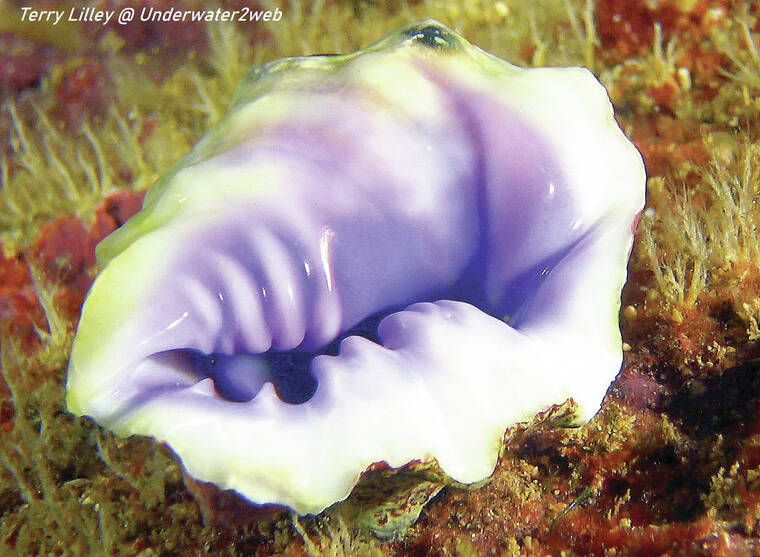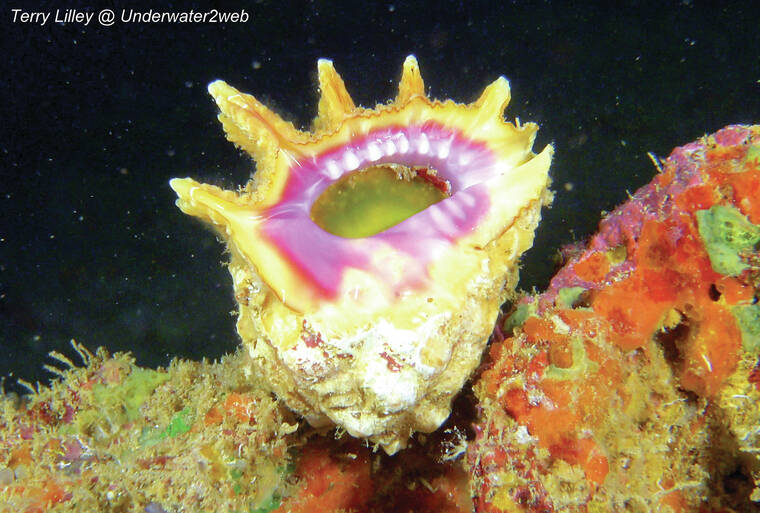When you snorkel or dive in Hawai‘i you will more than likely swim right over several species of drupe shells. These marine snails are from one to two inches long and in old Hawai‘i they were called rock shells.
When you snorkel or dive in Hawai‘i you will more than likely swim right over several species of drupe shells. These marine snails are from one to two inches long and in old Hawai‘i they were called rock shells.
The top of the shell looks just like the reef and has algae growing on it so it blends in making them very hard to find. They hold onto the reef with a suction cup like foot so they won’t be tumbled even in large surf. The underside of the shell is just beautiful. The Brilliant Drupe is pink and yellow and the Mulberry Drupe is blue or purple.
There are over 20 known species of drupes in Hawai‘i and most of them are fierce predators. Many marine snails and slugs eat algae or sponges but makaloa eats other shells, worms, urchins and even live coral. They may move very slowly but they are deadly to other reef creatures and the way they hunt is quite amazing.
On their soft suction cup foot is a boring drill. They find other live shells like the cowry and cone shells and make a slow motion attack. They extend their foot over the shell they capture and slowly drill a hole in the shell. They then inject an enzyme into the inside of the shell which breaks down the live snail so the drupe can suck it out partially digested.
When you sit on a beautiful Hawaiian beach look close at the sand. You will see that it is made up of ground shells and corals. Makaloa helps make our sandy beaches by eating lots of marine snails then the empty shells get ground up in the surf and end up on the beach. Sometimes while out snorkeling you may find a beautiful full shell with nothing living inside. Look closely at the shell and look for a tiny hole where makaloa used its drill to digest and suck out soft snail that once lived in the shell.
Out on the Hawaiian reef there are life and death struggles going on full time. Most people think of a top predator as a large tiger shark or monk seal but the reef is just alive with deadly predator snails, slugs and worms! All of these predator prey relationships make the coral reef a very complex living system and quite difficult to fully understand.
•••
Terry Lilley is a marine biologist living in Hanalei Kaua‘i and co-founder of Reef Guardians Hawai‘i, a nonprofit on a mission to provide education and resources to protect the coral reef. To donate to Reef Guardians Hawaii go to www.reefguardianshawaii.org.




